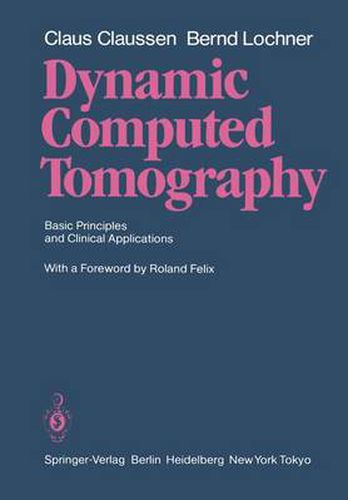Readings Newsletter
Become a Readings Member to make your shopping experience even easier.
Sign in or sign up for free!
You’re not far away from qualifying for FREE standard shipping within Australia
You’ve qualified for FREE standard shipping within Australia
The cart is loading…






This title is printed to order. This book may have been self-published. If so, we cannot guarantee the quality of the content. In the main most books will have gone through the editing process however some may not. We therefore suggest that you be aware of this before ordering this book. If in doubt check either the author or publisher’s details as we are unable to accept any returns unless they are faulty. Please contact us if you have any questions.
The authors present their experience in more than seven years of dynamic computed tomography in clinical practice. Time density curves and characteristic examples in specific regions of interest enrich the presentation. Dynamic computed tomography makes an important contribu tion to the diagnosis and evaluation of a pathologic process: the demonstration of the dynamics of blood flow within the lesion and surrounding normal tissue. Since both the lesion itself and adjacent normal tissue demonstrate characteristic findings in each circulatory phase, the study provides a large amount of data on the flow of blood and contrast material which facilitate both recognition and diiferentation of a lesion. Late studies following administration of a contrast agent allow an estimate of the passage of the contrast medium to the inter stitium, which is of diagnostic importance. Chapters dealing with specific clinical entities also contain useful information on the most appropriate means of contrast agent administration (bolus injection or infusion) as well as a discussion of indications for the procedure. Dynamic computed tomography represents a significant advance over conventional computed tomography in some situations, and this signifies a major contri bution to the diagnostic capabilities of the clinical radiologist. The authors are to be commended for the fact that they have clearly defined the limits of dynamic computed tomography. I hope that the first English language edition, following the appea rance of the German version in 1983, will be well received.
$9.00 standard shipping within Australia
FREE standard shipping within Australia for orders over $100.00
Express & International shipping calculated at checkout
This title is printed to order. This book may have been self-published. If so, we cannot guarantee the quality of the content. In the main most books will have gone through the editing process however some may not. We therefore suggest that you be aware of this before ordering this book. If in doubt check either the author or publisher’s details as we are unable to accept any returns unless they are faulty. Please contact us if you have any questions.
The authors present their experience in more than seven years of dynamic computed tomography in clinical practice. Time density curves and characteristic examples in specific regions of interest enrich the presentation. Dynamic computed tomography makes an important contribu tion to the diagnosis and evaluation of a pathologic process: the demonstration of the dynamics of blood flow within the lesion and surrounding normal tissue. Since both the lesion itself and adjacent normal tissue demonstrate characteristic findings in each circulatory phase, the study provides a large amount of data on the flow of blood and contrast material which facilitate both recognition and diiferentation of a lesion. Late studies following administration of a contrast agent allow an estimate of the passage of the contrast medium to the inter stitium, which is of diagnostic importance. Chapters dealing with specific clinical entities also contain useful information on the most appropriate means of contrast agent administration (bolus injection or infusion) as well as a discussion of indications for the procedure. Dynamic computed tomography represents a significant advance over conventional computed tomography in some situations, and this signifies a major contri bution to the diagnostic capabilities of the clinical radiologist. The authors are to be commended for the fact that they have clearly defined the limits of dynamic computed tomography. I hope that the first English language edition, following the appea rance of the German version in 1983, will be well received.